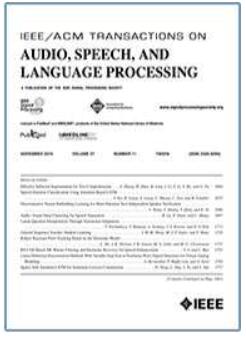WEDA:探索大型语言模型下游对齐的版权保护
IF 5.1
2区 计算机科学
Q1 ACOUSTICS
IEEE/ACM Transactions on Audio, Speech, and Language Processing
Pub Date : 2024-10-29
DOI:10.1109/TASLP.2024.3487419
引用次数: 0
摘要
大型语言模型(LLM)具有无可比拟的表示和概括能力,在自然语言处理(NLP)领域取得了重大进展。在部署之前,预训练的 LLM 通常需要根据特定的下游任务进行调整,以提高性能,这通常被称为下游对齐。考虑到所需的人力、训练资源和下游特定数据,这是一项成本高昂的工作。虽然保护模型本身的版权受到了广泛关注,但 LLM 对齐的版权保护却在很大程度上被忽视了。在本文中,我们提出了下游配准水印嵌入(WEDA)方案,该方案可为参数高效微调(PEFT)和上下文学习(ICL)这两种流行的 LLM 配对技术提供有效的版权保护。对于通过 PEFT 进行的对齐,我们提出了一种基于思维链(CoT)的解决方案,将水印嵌入 PEFT 权重中。此外,我们还扩展了这一解决方案,利用前缀集成 CoT 对嵌入 ICL 提示中的示例进行水印处理,从而保护通过 ICL 进行的对齐。我们进行了广泛的实验评估,以证明我们提出的方案的有效性。本文章由计算机程序翻译,如有差异,请以英文原文为准。
WEDA: Exploring Copyright Protection for Large Language Model Downstream Alignment
Large Language Models (LLMs) have shown incomparable representation and generalization capabilities, which have led to significant advancements in Natural Language Processing (NLP). Before deployment, the pre-trained LLMs often need to be tailored to specific downstream tasks for improved performance, which is commonly referred to as downstream alignment. This is a costly effort considering the needed manpower, training resources, and downstream-specific data. While much attention has been paid to protecting the copyright of the models themselves, the copyright protection of LLM alignment has been largely overlooked. In this paper, we present Watermark Embedding for Downstream Alignment (WEDA) scheme, which can provide effective copyright protection for two popular LLM alignment techniques parameter-efficient fine-tuning (PEFT) and in-context learning (ICL). For alignment through PEFT, we propose a Chain of Thought (CoT) based solution to embed watermarks into the PEFT weights. Furthermore, we extend this solution to safeguard alignment through ICL by utilizing the prefix-integrated CoT to watermark examples embedded within ICL prompts. We conduct an extensive experimental evaluation to demonstrate the effectiveness of our proposed scheme.
求助全文
通过发布文献求助,成功后即可免费获取论文全文。
去求助
来源期刊

IEEE/ACM Transactions on Audio, Speech, and Language Processing
ACOUSTICS-ENGINEERING, ELECTRICAL & ELECTRONIC
CiteScore
11.30
自引率
11.10%
发文量
217
期刊介绍:
The IEEE/ACM Transactions on Audio, Speech, and Language Processing covers audio, speech and language processing and the sciences that support them. In audio processing: transducers, room acoustics, active sound control, human audition, analysis/synthesis/coding of music, and consumer audio. In speech processing: areas such as speech analysis, synthesis, coding, speech and speaker recognition, speech production and perception, and speech enhancement. In language processing: speech and text analysis, understanding, generation, dialog management, translation, summarization, question answering and document indexing and retrieval, as well as general language modeling.
 求助内容:
求助内容: 应助结果提醒方式:
应助结果提醒方式:


